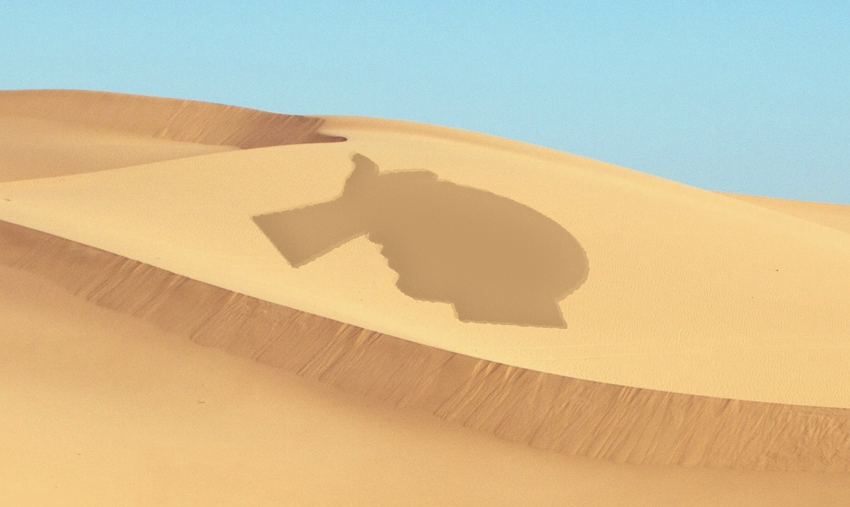What does the word “Sahara” mean in Arabic?
Don't scroll down until you've answered!

Duh! is a weekly column that gives circuitous answers to obvious questions. If you dig it, you can find 100 more of these essays in the Geeks Who Drink book, Duh!.
You may think of the Sahara as fast and bereft of life, but it’s only one of those things. In fact, its 3.3 million square miles – big enough to fit the continental U.S., plus a spare California – have been home to numerous people of historical import. A sampling:
- According to his classic contemporary biography, Antony of Egypt (251-356) was around age 20 when he was compelled by the words of Jesus to sell all his possessions and wander off from the fertile Nile Valley to the wilderness west of Cairo. After another couple decades,1 a bunch of folks back in civilization decided they wanted to be hermits with him (we don’t know if their native Coptic language had a word for “paradox”) The community of disciples he organized earned Antony the nickname “Father of Monasticism.”
- Tin Hinan, a circa-4th century ruler of the Ahaggar Tuareg, who still call her “Mother of Us All” and describe her in legend as an ideal warrior who arrived as an outsider and unified the people. She has since been more-or-less confirmed by carbon-dating as having been a real person – and a tall one, at that – since her southern Algerian tomb was excavated in 1925. (if you wanna visit her skeleton, you’ll have to go to the national museum in Algiers.)
- Mariem Hassan (1958-2015) sang traditionally-inflected jazz and blues songs to protest the Spanish, then Moroccan colonization of her native Western Sahara (the latter kicking off a 16-year war that ended in 1991). Her powerful music took her all over Europe and even Australia – especially after she moved to Spain in 2005, to treat the cancer that would eventually take her life – but in between, she always returned to her regular work as a nurse.
Of those three, only Hassan spoke any dialect of Arabic (Hassaniya), and thus only she would know that Sahara literally just means “desert.”2 And none of them would know that it wasn’t always a desert. Around 10,000 years ago most of the Sahara was a savanna, populated by hippos and potentially traversed by early humans. This is due to the earth’s “wobbly” rotation – its axis oscillates by a couple degrees every 20,000 years or so, changing how far the Western African Monsoon reaches into the continent.3
This also means that we’ll see another “Green Sahara” period in about 10,000 more years – that is, if other factors don’t interfere. But the Antonys of that future world needn’t fear: Egypt will stay dry.
- During that time, the bishop/biographer says, Antony was tempted by a demon, who filled his mind with doubt and “one night even took upon him the shape of a woman and imitated all her acts.” We choose to believe that the woman in question was Bette Midler, and especially hope that Antony enjoyed “Boogie Woogie Bugle Boy.”
- Or technically “deserts” – çahara. The singular is just çahra.
- As recently as 2000, the movement of the geographic north pole changed direction and sped up. It was going toward Canada, but now it’s racing toward Britain. Weirdly, NASA figured out that the change was due to aquifer depletion around the Caspian Sea – apparently the mass of the earth specifically at the 45th parallels is really important for these things. Look alive, Oregon!
